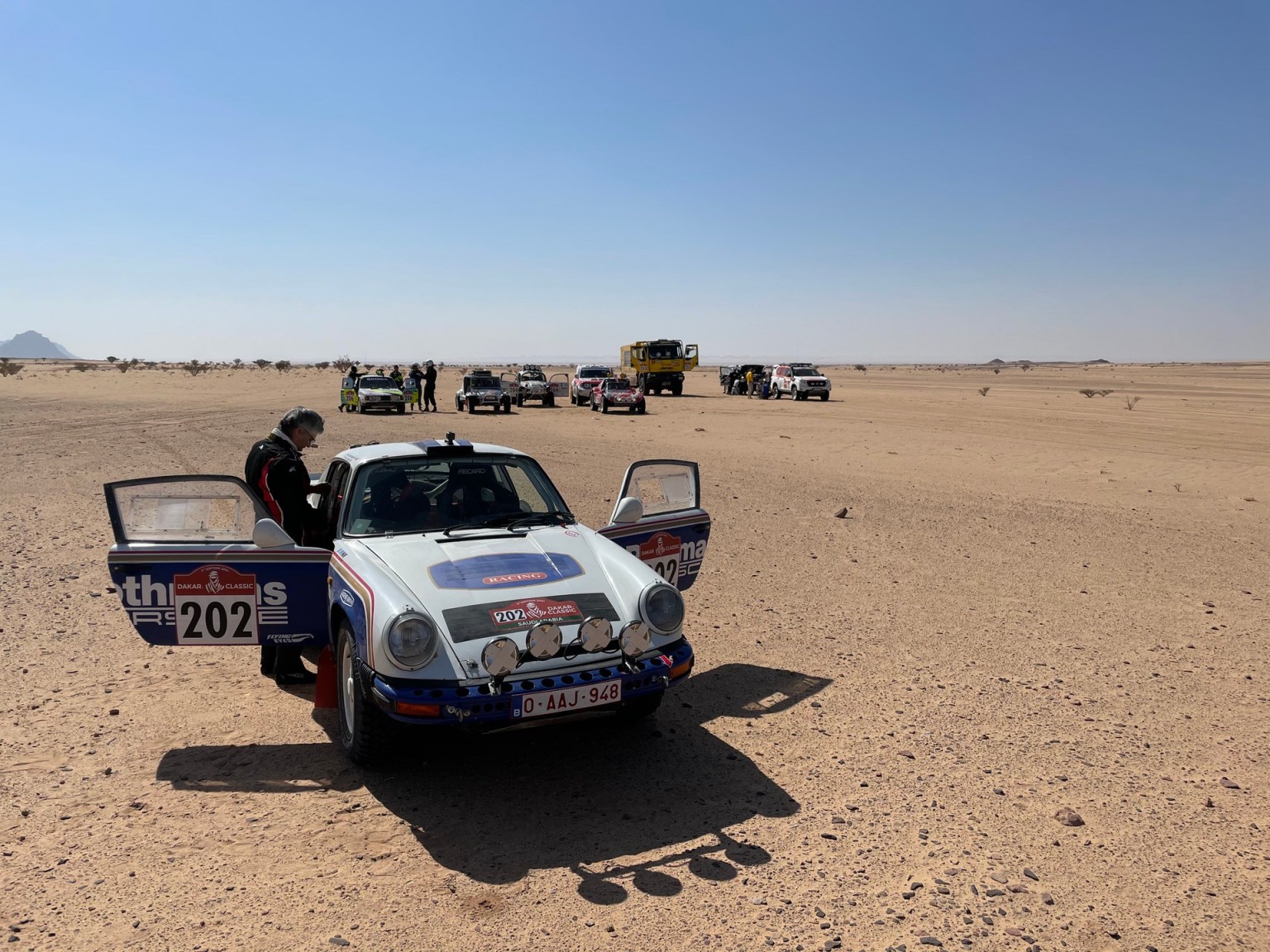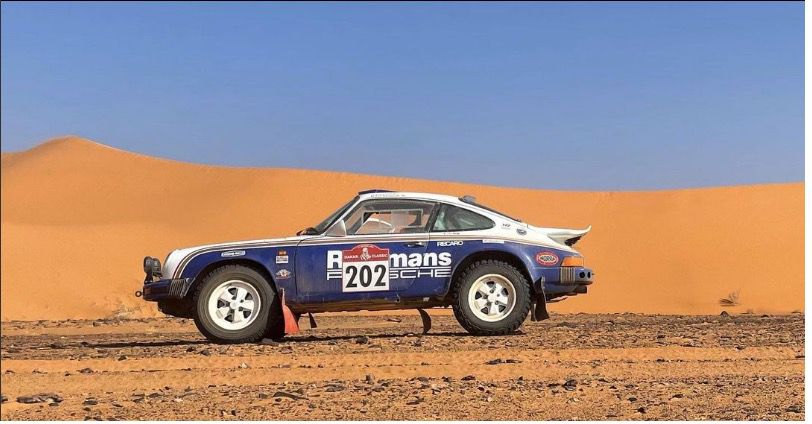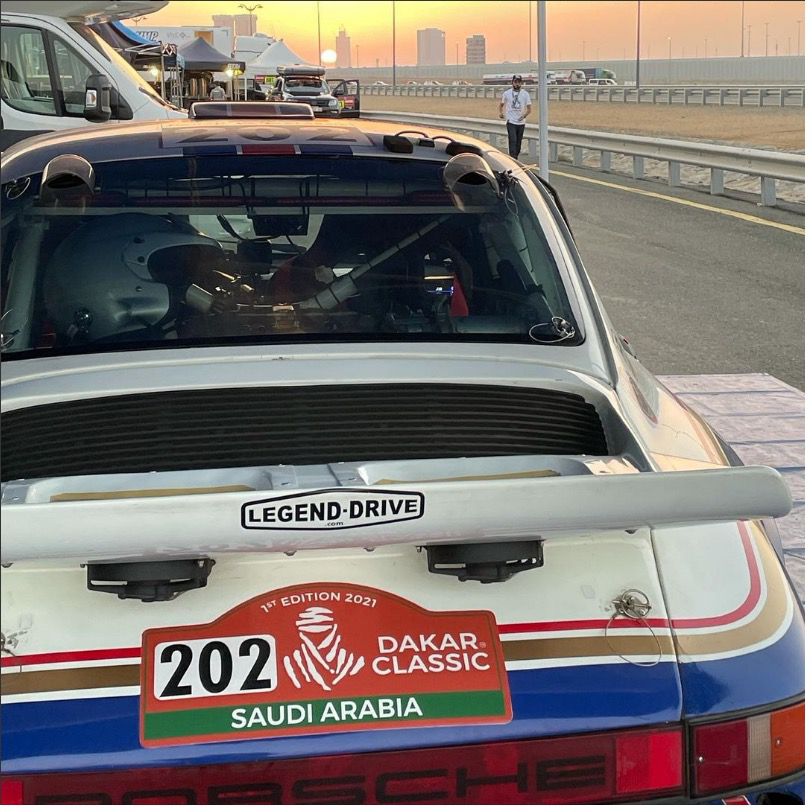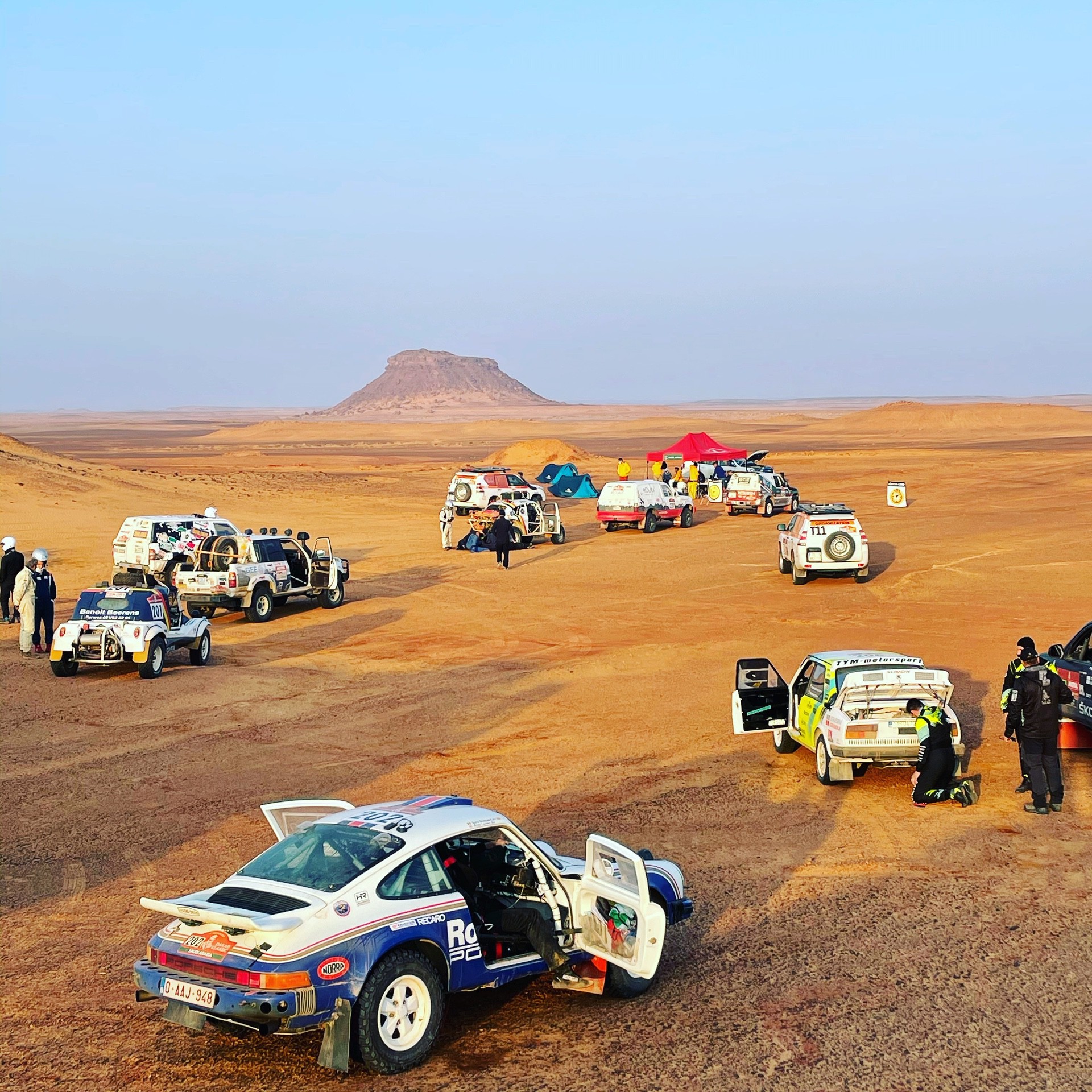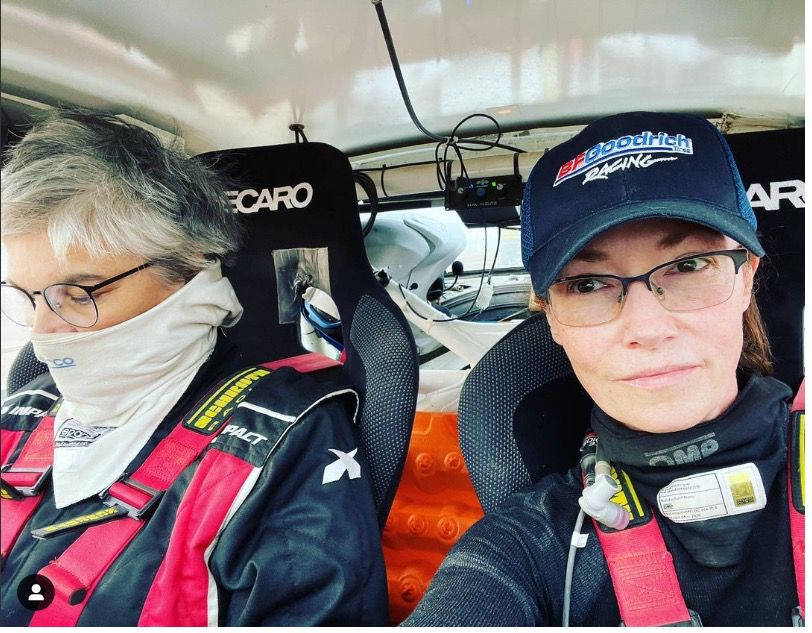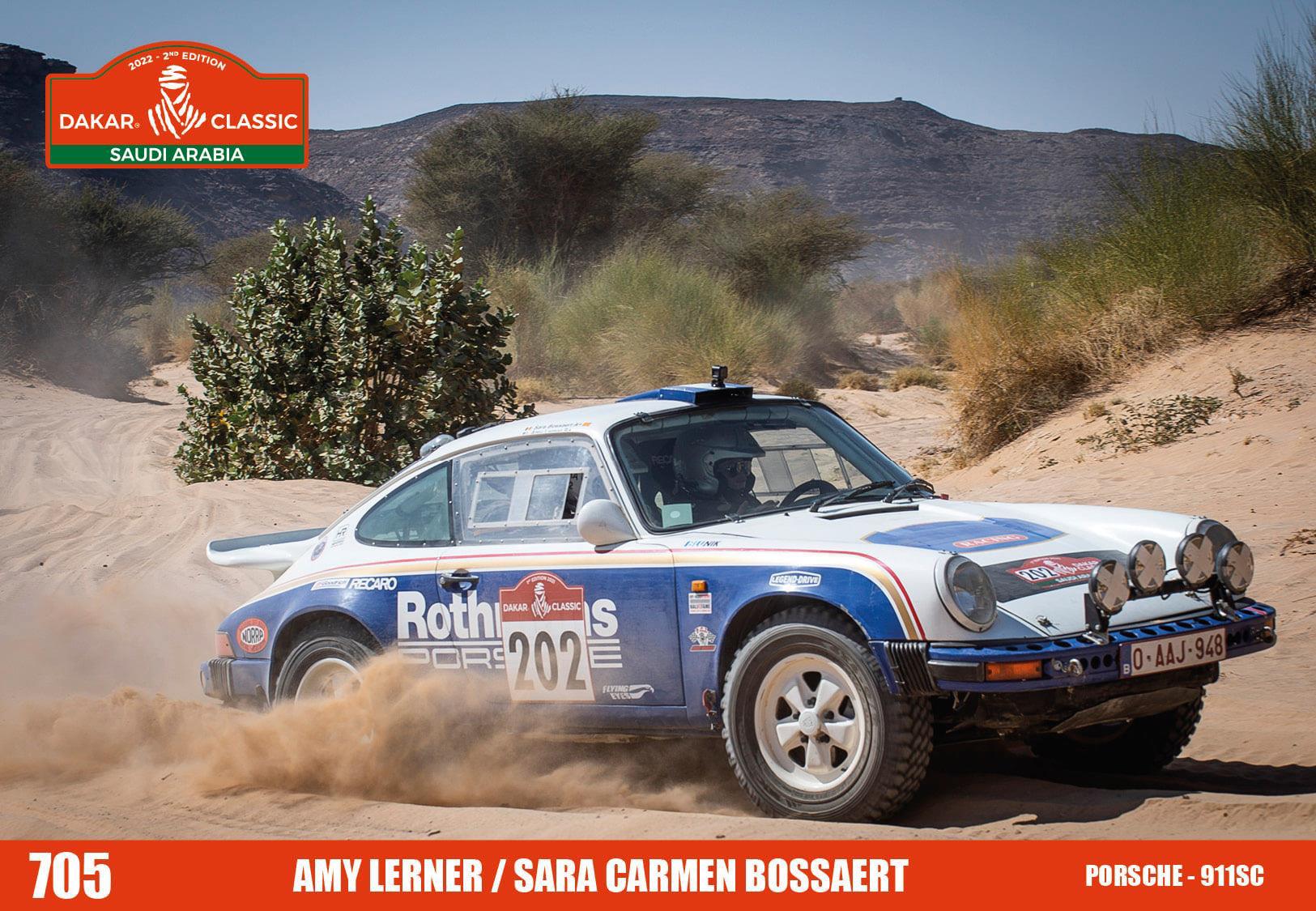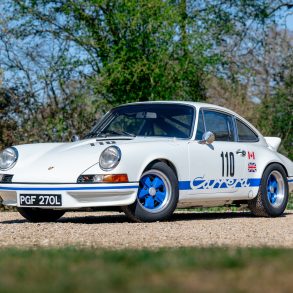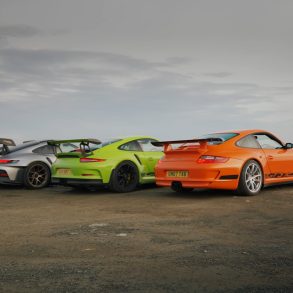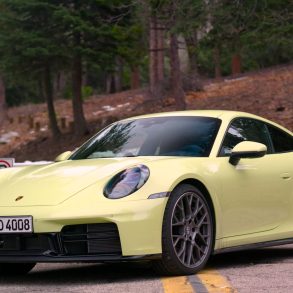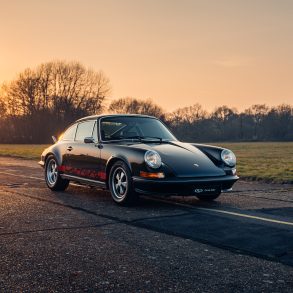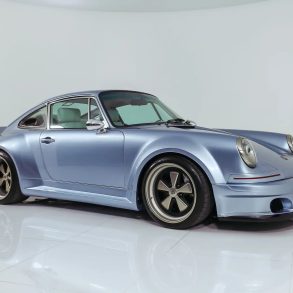Words by Kevin Ehrlich & Mary Fischer / Images by Amy Lerner, Dakar and Porsche
During public health restrictions that shuttered workplaces, restaurants, museums and even outdoor recreation areas, many retreated behind closed doors. Some intensified their work-out regimes while many logged couch time binge-watching their favorite television series. Others found new hobbies or caught up on reading. Amy Lerner, however, decided to enter the 2021 Dakar Classic rally in a Porsche 911.
Lerner had no prior experience running the Dakar. Furthermore, the American didn’t have a car to pilot in the race. Two weeks before the entry deadline, however, she found a rally-ready Porsche in Europe and put together a Dakar Classic effort. Rally racers are a special breed but even Lerner calls it “pandemic induced lunacy.”
A Brief History of Porsche & the Dakar Rally
The Paris-Dakar Rally, run since December 1978/January 1979, is famous as the grueling test for participants and machines that started in Paris and carved its way across Africa. The Dakar is contested by drivers and teams in multiple classes, including cars and buggies that have become more bespoke over the years, motorcycles and all-terrain vehicles, and even industrial trucks.
The event has changed over the years in format and location but the idea of a desert enduro remains constant. The current version stays within the boundaries of Saudi Arabia.
Lerner was inspired by a new “never done before” special Dakar Classic category that organizers assembled for 2021. The vintage racing version of the Dakar targeted the same or similar vehicles to those that ran in the Dakar Rally before the year 2000.
While the headline Dakar runners would compete on outright speed, the two dozen Classic entrants were destined for a “regularity rally” that challenged competitors’ ability to align their routes and pace with a pre-determined course and time checkpoints.
Porsche’s history at the Dakar in the mid-1980s is the stuff of Porsche motorsports legend. Jacky Ickx was the spark that brought Rothmans Tobacco sponsorship and Porsche together at the precise time that Porsche was looking to revitalize the 911 model and challenge Audi’s all-wheel drive technology. The project ultimately culminated in the 959 supercar and paved the way for Porsche all-wheel drive cars in other road 911 models.
Ickx didn’t just bring sponsorship and driving talent—he was involved in organizing as well. In fact, Team Jacky Ickx technically entered Porsche’s Dakar entries. Porsche tackled the rally with relentless preparation and engineering but knew little about Dakar.
In those days, Porsche motorsport was a relatively small operation, and the Dakar competed for time and attention with other projects—such as the 956 and 962 prototypes racing at places like LeMans and Daytona. People such as Peter Falk, Roland Kussmaul, and Wolf-Hendrik Unger operated as a tight and talented team to make it happen.
Porsche won the Paris-Dakar rally overall in 1984 with the 953 and in 1986 with the 959. Ickx may have been the spark and the best-known driver of the three-year program, but René Metge’s racing skills and knowledge of Dakar racing was at the heart of Porsche’s success.
He was the acknowledged team leader for Paris-Dakar and taught others how to read the desert and survive the race. With his trio of Dakar wins in 1981 (in a Range Rover), 1984 and 1986 (in Porsches), Metge’s Dakar record is remarkable. The mighty all-wheel drive Porsches still capture the imagination of Porsche and desert racing enthusiasts, largely due to respect for the drivers and engineers involved and the challenges they faced.
Amy Lerner’s Path to the Dakar Rally
Lerner didn’t start out looking to run a Porsche in the Dakar. Her initial inquiries found a pair of Land Rovers to rent and a 1982 Porsche 911 SC to buy.
The 3.0 liter Porsche had prior rally history and included modifications such as upgraded suspension, underbody skid plates and racing seats. It hadn’t raced in a while, but buying made more economic sense than renting—despite never seeing the Porsche in person. She figured that “if I don’t destroy it, the price is solid and I can probably sell it flat after the rally.”
While Lerner wasn’t entirely new to the marque—she had previously owned a 1993 Carrera 2 cabriolet and a 1994 widebody coupe—she admittedly had never driven a Porsche rally car.
The €15,000 entry fee covered transportation to Saudi Arabia, so the Porsche was prepared in Belgium by Henrard Racing and sent to Marseilles, France to join other competitors for transport en masse to Saudi Arabia. Given the tight timeline, Lerner couldn’t fly to Belgium for a test prior to the race.
All that being the case, Lerner’s first drive in her Porsche was on the ground in Saudi Arabia after two days of quarantine, rolling around a parking lot for technical checks just before the race got underway. Talk about rising to the occasion!
Amy Lerner’s Porsche 911 Adventure at the 2021 Dakar Rally
Driving: A Lerner Family Pastime
While Lerner didn’t have time at the controls of the Porsche before the race, she arrived with an extensive motoring history. It started growing up with her father who was into antique cars, then accelerated with a visit as an adult to the Skip Barber racing academy.
Lerner eventually trained with Baja legend Rod Hall, ran the Rallye des Gazelles in Morocco four times, the Australasian Safari Rally in the Western Australian Outback, and the MINT 400 a few times. In her spare time, she found time to make a documentary film titled “One More Win” to chronicle Hall’s 50th consecutive Baja 1000.
Preparing for the Race
Lerner didn’t tackle her first Dakar solo. For starters, she needed a navigator. After initial arrangements with a seasoned navigator fell through, she contacted Sara Bossaert, an architect friend living in Barcelona, Spain.
Bossaert was a rally navigation novice, but was up for the challenge and immediately made the leap of faith to join the effort. In fact, she not only met the challenge, she was infected by the rally bug in the process.
Their Porsche created quite a stir. Lerner had originally planned to change the Rothmans wrap but was convinced to leave it alone. The blue and white Rothmans livery paid direct homage to the 1984 Dakar Porsche entries. She found that the car was constantly swarmed with people asking questions and taking photos and selfies. The Porsche got as much or more attention than most of the runners in the main event.
“Someone told me that I got more media coverage than Carlos Sainz,” recalls Lerner. It had not been her intent to cause a media sensation, and she was astounded at the attention. The heritage liveried Porsche was a favorite focus for Dakar Classic television coverage and was the most photographed car of the rally.
“I had no idea the impact it would have in Saudi Arabia,” Lerner continues. “But now I really appreciate the dream that racing a Porsche at Dakar is for people—the way it captured everybody’s imagination and soul. It is a vehicle and era. To bring that car back meant so much to so many people.”
The 2021 Dakar Classic Begins
The Dakar Classic was not a banzai full throttle dash across the desert. Instead, the time-speed-distance rally ran at a reasonable pace parallel to the main Dakar field.
While organizers wanted the field to finish, the course was challenging and the pace lively. The terrain was similar to the main Dakar field, although worse in some cases, with rocks, washes, trees and camels dotting the landscape.
The Classic category runners essentially ran parallel to the main field, yet shared or crossed the course three times during the event—adding an extra layer of drama due to limited visibility of the surrounding traffic.
A team of four supported Lerner and Bossaert—two mechanics, a team manager, and a media manager. The group utilized a support truck, trailer and camper.
The fifteen-day event involved seven days of racing, a single rest day, and another seven days of racing. Each day was a unique stage as the course wound its way around the country. Race logistics required moving a tent city of thousands of people each night, with airports serving as common campsites given their natural role as transportation hubs.
The eighth day was a rest day. Lerner and Bossaert also used the services of a shared in-race support truck as an insurance policy if needed.
The course changes each year, so there was no pre-running the route. Competitors relied on a digital road book called a Tripy for navigation.
The Tripy displayed a route on the screen, similar to a road-car GPS but without a defined road in many places. Additional navigation notes helped guide teams, who had their own hard copy road book as well.
The notes were precise, so the challenge was how to interpret them and stay aligned to the clock. It was often difficult to stay on the path that the digital road book envisioned.
The Tripy showed a blue line for the route and arrows to show the way back, but drivers and navigators needed to adjust for the lost time. Bossaert’s analytical mind and problem-solving skills were a perfect fit for this challenge. The plucky Porsche pushed through different terrain each day and never veered significantly off course.
Unlike the all-wheel drive Porsches that triumphed in the mid-1980s Dakar competitions, Lerner’s car was a two-wheel drive 911. That difference was a steep learning curve for her.
All of Lerner’s prior rally history involved four-wheel drive vehicles, so it took a few days to unlearn her old driving style and relearn a new one. Otherwise, it would have been too easy to bury the rear of the car in sand up to the axle.
Luckily, Lerner successfully adapted her driving style, and Bossaert learned to recognize threats and call out guidance to maintain momentum or avoid trouble spots.
The role of the navigator was key. Bossaert quickly learned to read the road, follow the notes, watch the pace and make adjustments on the fly.
The further the pair pushed, the learning curve flattened and communication and coordination developed and improved. As penalty points were applied for failures to hew closely to the prescribed route template, the goal was to adhere to the route and minimize total penalty points.
The regularity rally format released cars from the start line a minute apart. Because each vehicle tried to stick to a prescribed pace, competitors typically didn’t see the others unless someone had a problem.
Each vehicle drove their own rally. While the desert can be an enormous and intimidating place, Lerner said there was no sense of isolation due to the extreme focus.
Into the Desert
Along the way, the range of scenery was incredible. Lerner recalls that “[t]he terrain, the rock formations and dunes were in shapes that I had never seen. Just spectacular.”
Driving through five kilometers of a locust swarm provided another only-in-Dakar moment. Those aspects made the Dakar more of a mental and physical endurance challenge than a test of driving skill and talent.
Lerner says that the “[m]oment-by-moment level of driving difficulty might be similar between Baja, Dakar and MINT. However, running Dakar is like running ten Baja 1000 races back-to-back or a MINT 400 rally every day for two weeks.”
Trials & Tribulations
Incredibly, the pair only encountered a handful of moments of real trouble. The Porsche carried two spare wheels on board but had only one flat BF Goodrich tire for the whole event. Otherwise, the only mechanical issue was a broken shock mount suffered on a steep rocky uphill section.
Across the Finish Line
Throughout it all, Lerner recalled Rod Hall’s mantra “To finish first, first you must finish.” Go one mile more and then one mile more until you learn your limits. The Porsche not only finished but logged a 15th place in the Classic category.
The effort caught the attention of others watching from afar. Porsche highlighted the venture in a media feature. A huge thrill came in the form of an Instagram message during the rally from René Metge’s son.
That acknowledgement brought tears to Lerner’s eyes, knowing the connection the rally legend had to Porsche and the Dakar. The Metge family was moved that people were keeping the spirit alive of what had happened so many years ago, reinforcing that the legacy and lore of Dakar remains strong.
What the Future Holds for Lerner’s Porsche & the Dakar Rally
The experience was rewarding—so rewarding that Lerner and Bossaert decided to do it again in 2022. The car didn’t require much maintenance or repair. It got more underbody protection, a new fuel cell and fresh tires.
The driver and navigator worked to develop their skills as well, including running the historic Rally Costa Brava in Spain in early October 2021 with a Volkswagen Golf. Like the Dakar Classic, the Rally Costa Brava was a regularity road rally which allowed the duo to focus on strategy, tools, communication and coordination.
Lerner recalls that for the Dakar, “[w]e just sat in the car and we left. Sara hadn’t had any experience and my experience wasn’t in this type of an event, so working on our communication happened while we were competing.” The road rally removed the desert variables and allowed them to work out how communication should work in competition to make it as efficient and precise as possible.
What to Expect in 2022
The 2022 Dakar Classic will again be a regularity rally, but with more navigational challenges—20% of the race will limit assistance from the digital road book. 2022 will also visit the spectacular dunes of the Empty Quarter with a two-day marathon stage where the competitors stay together overnight without their crews.
The 2022 field (including support vehicles) gathered in Marseille, France on November 25 and made its way to Saudi Arabia. The Classic formula clearly resonated, and Lerner and Bossaert will face more competition.
The Dakar Classic entry list for the 2022 race is more than six times the entrants of the inaugural 2021 edition. Two other Porsches are scheduled to join Lerner and Bossaert’s entry, making for a trio of Porsches in the Classic category.
American corporate sponsors haven’t quite recognized the value of the Dakar and primarily view the Dakar as a European event—but Lerner’s project has demonstrated that there is opportunity.
In theory, Dakar can be raced on a modest budget. No racing is ever “low cost”, but support trucks and camper vans are optional if you’re willing to sleep in your vehicle, carry your own spares, and do your own mechanical work.
With the regularity rally format, an entrant doesn’t need extensive Dakar or rally experience to make a go of it either. The Dakar Classic is not only a nod to history but might be a gateway for those looking to get involved without a full-fledged factory effort.
As Lerner says, “I did it. Anybody else can too. Be persistent and that’s all you really need to be.”
Jacky Ickx and René Metge would be proud.
The 2022 Dakar runs from January 1 through 14. Look for television coverage and follow Team Lerner on Instagram (@teamlerner).
All Images via Amy Lerner, Dakar, and Porsche.


